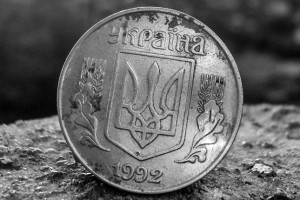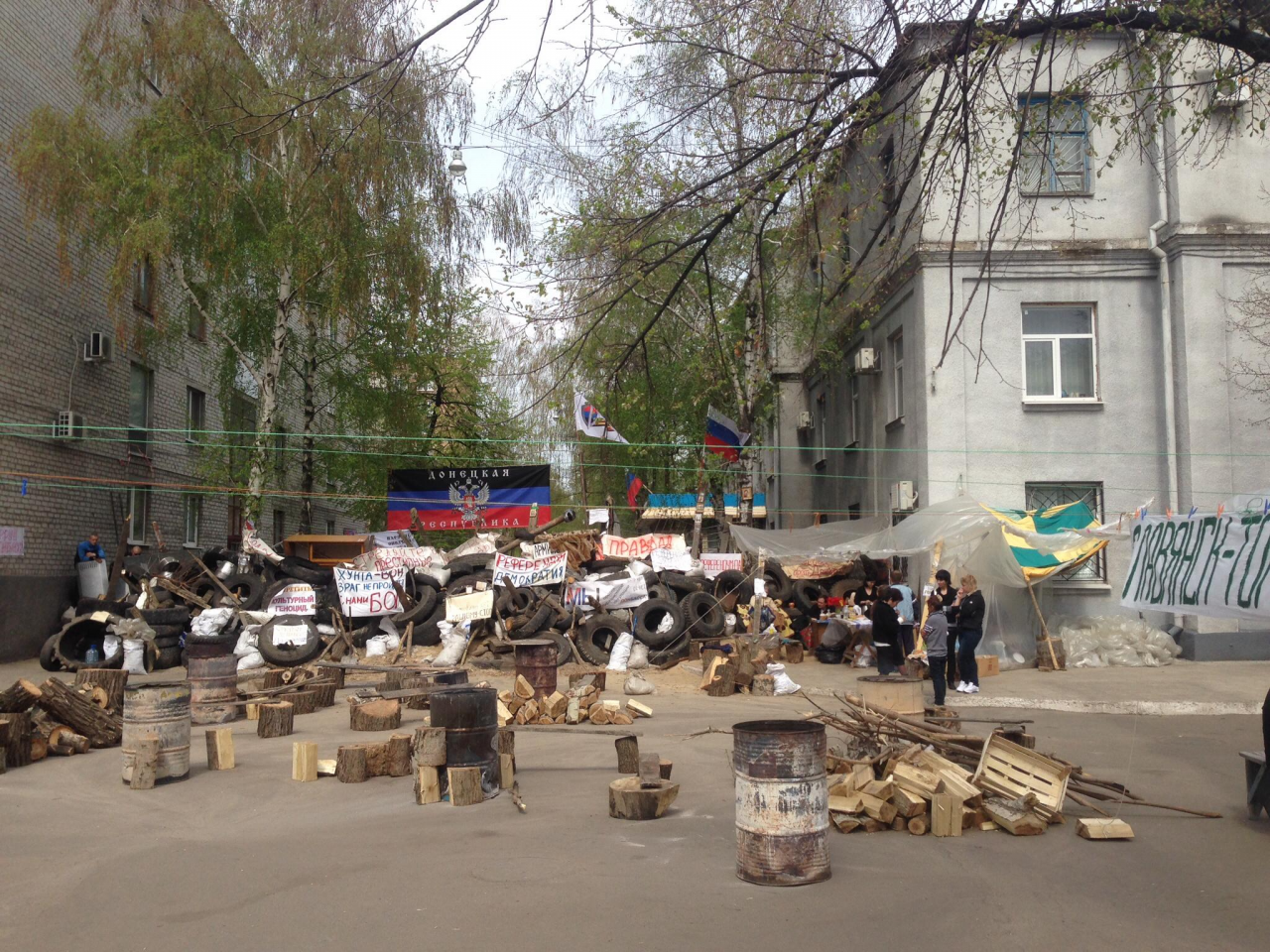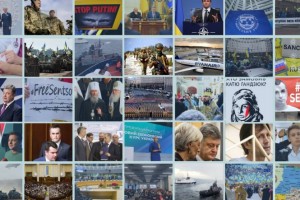Winter is coming. What should be decided on the battle front this fall
If Ukraine's military efforts do not decide the outcome of the war this fall, and if political scenarios involving meaningful negotiations or a change of leadership in Russia remain uncertain, the war will drag on.
The already long-lasting war
In a recent interview, Ukrainian President Volodymyr Zelenskyy claimed that Ukraine is preparing for a "long-lasting war."
However, the war in Ukraine is already a long-lasting one. It began on February 20, 2014, with the occupation and then annexation of Crimea by the Russian Federation, followed by a hybrid war and then outright military intervention in Donbas the same year.
Ukraine's current counteroffensive is the second major one since February 2022. It follows a major counteroffensive that resulted in the liberation of the city of Kherson and most of the Kharkiv region previous fall.
In contrast to the Kharkiv offensive this summer, Ukrainian troops are advancing slowly. Their actions can be compared to the advance in Kherson previous fall, when a war of attrition rather than rapid maneuvers dominated.
Analysts who believed that the Ukrainians would use Western-made armored vehicles to break through three lines of Russian defense in the South were optimistic, although their predictions had solid grounds.
So why has the counteroffensive not yet achieved its timely objectives? And is an even more protracted war inevitable?
A complicated counteroffensive: an operational overview
The previous summer, I visited Ukraine to conduct field research, mainly to better understand the military situation and the security implications for Ukraine, as well as for the smaller states of Eastern Europe and other regions.
Ukrainian victory remains achievable
До цього часу Україна почала шосту фазу війни 2022 року, розгорнувши контрнаступ у Запорізькій і Донецькій, а також у Луганській і Херсонській областях та продовживши наступ в окупованому Криму.
After a period of shaping operations, analysts became aware of three axes of the offensive. The first one is routed through Orikhiv in Zaporizhzhia region. The goal of this advance is to reach Tokmak, then Melitopol and, in the end, the borders of Crimea.
The second axis is through Velyka Novosilka in Donetsk region. This advance is most likely aimed at Berdiansk or Mariupol, located on coastline of the Sea of Azov.
Finally, the third direction of the offensive is Bakhmut. The goal is likely to recapture the city or at least hold on to some of the elite Russian airborne units that replaced the Wagner militants in Bakhmut, thus preventing them from being rotated or redeployed to the South.
Raids and smaller-scale operations were conducted on the left bank of the Dnipro River in Kherson and Mykolaiv regions (Kinburn Spit) to gain a foothold in Kozachy Tabory and other settlements. So far, the main confirmed result has been the retention of Russian units in or near the areas where the raids took place.
Currently, battalion and company units of almost all 12 brigades formed by Ukraine during the combat operations in 2022 are taking part in the counteroffensive.
Nine of these brigades were trained in the Western countries. Most of the soldiers are recently recruited civilians. Some of these brigades, such as the 47th and 33rd mechanized brigades, are armed with American Bradley infantry fighting vehicles, German Leopard tanks, or other Western equipment and systems.
However, most weapons - light, medium, and heavy - remain Ukrainian and/or Soviet. This is especially true for the more experienced units, such as the 93rd Mechanized and 3rd Separate Assault Brigades.
In general, the counteroffensive is a multifaceted effort to get closer to Crimea, cut off land communications (the so-called "land bridge") between Russia's internationally recognized borders and Crimea, divide Russian forces, significantly weaken them, and cut off internal supply lines - all with significant Western support.
The operational plan for this phase is complex but realistic. Western support, unfortunately, is belated but consistent and surprisingly generous (even compared to support for Israel, Jordan, Egypt, Afghanistan, and Taiwan).
What hinders success?
Why everything develops the way it does: an assessment
On the Ukrainian side, the situation is influenced by both the qualitative and quantitative composition of the units, the structure and deployment of forces, weapons systems and ammunition.
In terms of quality, transforming an ammunition stockpile into a combat capability, forming new brigades of newly mobilized soldiers in a few months, and then using them to conduct an all-out offensive maneuver against a well-prepared Russian defense proved to be a very challenging task, even with the (relatively short) Western training and (very late) provision of weapons and ammunition.
Both the lack of air power parity and the limited availability of short-range air defense systems and ammunition in the southern frontline hindered the advance of Ukrainian mechanized infantry units. Russian helicopters and assault warplanes (especially KA-52 attack helicopters) proved effective in hindering the advance of Ukrainian armored vehicles and infantry. In addition, a limited number of portable demining equipment, as well as portable bridge-laying and engineering equipment, contributed to slowing the advance of the Ukrainian liberation forces. Unlike the Kharkiv offensive of 2022, Ukraine's counteroffensive of 2023 was anticipated and was not a surprise for the enemy.
The Russian troops had enough time to prepare a reliable defense in the occupied territories. These included wider and deeper minefields, tank ditches, fortifications, dragon's teeth, systems of trenches and tunnels with intersecting fields of fire, strongholds, and hidden exits from which Russian units could launch surprise counterattacks from unexpected places.
The delay in the delivery of Western armored vehicles needed for effective mobile mechanized offensives also gave the Russians enough time to mobilize and rotate their forces. This included the restoration, reinforcement, and redeployment to Zaporizhzhia region (south) of units that had previously "collapsed" in northeast of Kharkiv region.
The Russian Ministry of Defense currently has under its command units formed from convicted criminals (the so-called "Storm-Z" battalions), which were recruited and previously led by the Wagner group. The ministry also formed new brigades from civilians recently mobilized in a wave of "partial mobilization." Both "Storm Z" and the mobilized brigades have an impact on the overall number of personnel and strengthen the defense line. In Stalin's words, "quantity has its own quality."
In the East, despite leaving Ukraine (after the "March for Justice" on Moscow), the Wagner group is still very influential. This organization (and its associates in airborne, artillery, and air force units) held several of the most experienced Ukrainian brigades in the area during the battle for Bakhmut and exhausted them.
Despite the fact that the ratio of casualties (attrition rate) was consistently in favor of Ukrainian troops in Bakhmut (according to various estimates, from 1 to 3 to 1 to 7), the battle for Bakhmut gave the Russians much-needed time to strengthen their defensive positions in the South.
In the northeast, Russian troops imitated part of Ukraine's counteroffensive last fall. Ukrainian official media emphasized the counteroffensive in the South (Kherson region), while the unexpected counterattack was launched in the Northeast (Kharkiv and Luhansk regions). Currently, Russia is conducting a counteroffensive in the same area along the Svatove-Kreminna axis (Luhansk region), trying to push westward toward Kharkiv, while Ukraine's efforts are focused on the South and East.
Heading into winter?
If Ukraine's military efforts do not decide the outcome of the war this fall, and if political scenarios involving meaningful negotiations or a change of leadership in Russia remain uncertain, the war will drag on into winter and most likely beyond.
Contrary to popular belief, winter usually does not stop the combat operations.
Intense battles, such as the 2015 battle of Debaltseve and the 2022 Kherson offensive, were fought in the winter. Last winter, Russia also launched an air terrorist campaign against Ukraine's civilian energy and electricity infrastructure to coerce the population to submission. This campaign is likely to be repeated this winter. In September of this year, missile attacks were carried out against Ukraine's energy infrastructure, which was the first time in the last six months. However, compared to last winter, Ukraine is much better prepared in terms of air defense and emergency response.
Overall, the Russian armed forces are adapting and innovating, largely in response to the stunning adaptation and impressive innovation of the Ukrainian armed forces. This is turning the liberation of Ukraine's territory into a very expensive war for independence. Ukraine's priorities should be more than ever to strengthen its alliances and friendly relations - with the West and beyond, including the so-called "global South"; to continue to strengthen its air defense this winter; and to continue mobilization and training activities based on lessons learned from past experience. Ukrainian victory is still achievable - it is still possible, but it will cost the defenders a lot.









